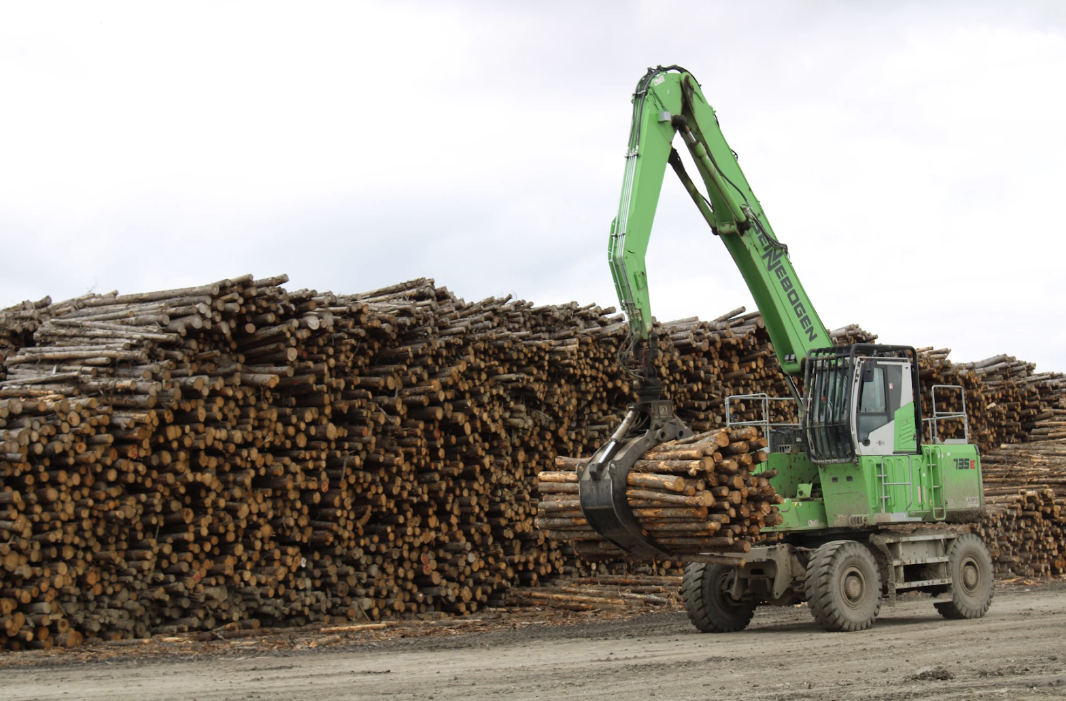Image via Ali Snider
***
Logging is the practice of cutting down trees to harvest the timber from them. On April 3, 2025, the Trump administration passed a memo in which hundreds of acres of previously protected forest land is now subject to logging to prevent wildfires. It is no surprise that with the increase of climate change, wildfires are becoming more common, especially in hot, dry places such as California. While some argue that logging helps to prevent forest fires because there is less flammable material to catch on fire, logging ultimately contributes to climate change, which is a factor in increasing the scale of forest fires. While the Biden administration also sought more logging measures where forests and neighborhoods met, the Trump administration greatly expanded these measures.
The Wildlife Society criticized the Trump administration for pursuing forest policies that benefit private logging interests rather than addressing wildfire threats. It is part of a broader strategy to reduce public oversight and environmental protections on nearly 60% of national forest lands. Critics argue these measures prioritize timber production over community protection while sidestepping environmental laws and reducing Forest Service personnel. The implications of this shift include a potential for significant ecological degradation through increased logging in previously protected areas while failing to address wildfire threats effectively. Bypassing standing environmental laws and reducing public input from the public sets a concerning precedent for how public lands might be managed in the future. The shift toward prioritizing timber production over science-based management threatens the long-term health of national forests and the safety of communities vulnerable to wildfires.
While forest fires typically happen in places such as California and Texas due to their climate, this new logging measure covers 176,000 square miles. However, part of this land includes states with typically cold temperatures and no history of forest fires, such as Minnesota, Michigan, and New Hampshire. Since these states aren’t as big of a risk for forest fires, it brings into question the motives for having this land included in these logging measures. Some argue that this logging measure was not about helping to decrease forest fires but to help support the timber industry and give them more trees that can be harvested to sell. The timber industry has commented on these measures and called them “common sense.” They argue that only 35% of forests are available for harvesting, which is a number that should be upped. But, environmentally, there are awful implications associated with increasing the amount of land that can be harvested for timber.
As forests are cleared, critical wildlife habitats become destroyed, which disrupts migration paths and threatens species that depend on large, uninterrupted forest ecosystems. This fragmentation particularly endangers species that require old-growth conditions, potentially leading to localized population declines or extinctions. Forests serve as crucial carbon sinks, with mature trees storing significant carbon accumulated over decades or centuries. When harvested, much of this carbon is released, reducing the landscape’s capacity to mitigate climate change and contributing to forest fires. Simultaneously, removing forest cover accelerates soil erosion, particularly on slopes, causing sedimentation in waterways that degrades aquatic habitats and water quality, which can play a critical role in naturally putting out these forest fires.
The irony of expanding logging measures to combat wildfires cannot be overstated. While selectively removing trees near communities can create defensible spaces, the broad expansion of logging into previously protected areas, particularly in regions with minimal wildfire risk, suggests priorities beyond public safety and a desire to decrease wildfires. The timber industry’s characterization of these measures as “common sense” fails to acknowledge the complex ecological consequences documented by environmental scientists and wildlife experts. As a country, we need to question politicians’ real motives, especially when the environment is at risk.
***
This article was edited by Bowen Yao.
